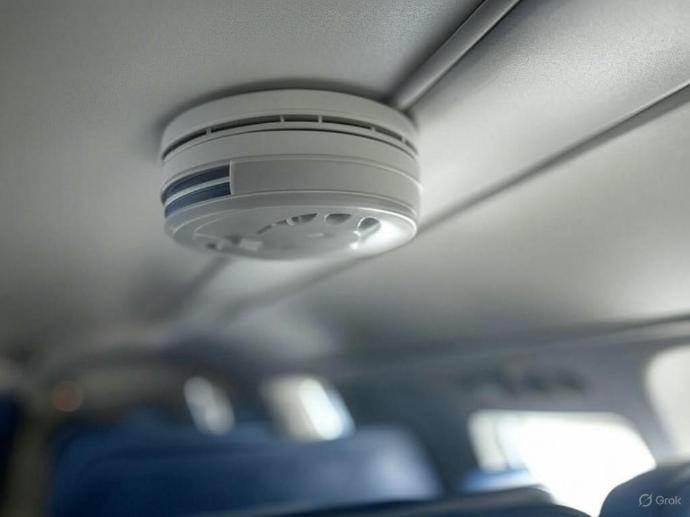The Role of PPC1200-00 Smoke Detector in Fire Safety Systems

Ensuring robust aircraft fire safety is crucial in aviation, and one of the key components contributing to this is an efficient aircraft smoke detector. Among the many solutions available, the PPC1200-00 stands out as a high-performance smoke detector engineered to protect the aircraft through early detection and rapid response to fire hazards.
Understanding the PPC1200-00 Smoke Detector
The PPC1200-00 is designed specifically for use in aviation environments, where rapid and reliable detection of smoke can make all the difference in averting disaster. This advanced detector incorporates state-of-the-art sensor technology to identify even the smallest traces of smoke, ensuring that any signs of a potential fire are detected early. Its robust construction and precision engineering make it a trusted component in the broader ecosystem of aircraft fire safety systems. Some of its features include,
High Sensitivity
Utilizes both optical and ionization sensors to capture minute smoke particles, ensuring early detection.
Robust Construction
Built to withstand the vibration, temperature fluctuations, and pressure changes typical in an aircraft environment.
Seamless Integration
Easily connects with other fire safety systems to provide a cohesive response during emergencies.
How PPC1200-00 Detects and Responds to Fire Hazards
The core strength of the PPC1200-00 lies in its sophisticated detection and response capabilities. Here’s how it functions within an aircraft’s fire safety system:
Dual Sensor Technology
The PPC1200-00 employs a combination of optical and ionization sensors to detect smoke particles from various sources. This dual approach ensures that the detector is effective under a wide range of conditions, from smoldering fires to sudden, high-intensity flames.
Instant Alert Mechanism
Once smoke is detected, the system triggers an immediate alert, interfacing with the aircraft’s central monitoring system. This early warning allows the fire suppression system to engage rapidly, mitigating potential damage.
Continuous Environmental Monitoring
Constant real-time surveillance ensures that any change in the ambient conditions is recorded and assessed, maintaining a high level of readiness throughout the flight.
Automated Response Integration
The detector is designed to work in hand with other components of the fire safety system, ensuring coordinated activation of alarms, fire suppression systems, and crew notifications.
Benefits of PPC1200-00 for Aircraft Fire Safety
Integrating the PPC1200-00 into your aircraft’s safety systems offers a number of advantages such as,
Enhanced Safety
Early detection is critical in preventing the spread of fire. The PPC1200-00’s ability to identify smoke at its nascent stages provides crucial time for the crew to respond effectively.
Improved Operational Reliability
Its robust design offers consistent performance, even in harsh conditions. This reliability is essential in maintaining trust in the safety systems during both routine operations and emergencies.
Compliance with Aviation Standards
The detector meets and exceeds the stringent standards required in aviation, ensuring that the aircraft remains compliant with international safety regulations.
Cost Efficiency
By reducing the risk of catastrophic fire incidents, the PPC1200-00 helps avoid costly repairs and downtime, proving to be a cost-effective investment in the long run.
Ease of Integration
Designed with modern aircraft systems in mind, it integrates seamlessly into existing fire safety networks, allowing for a streamlined upgrade of legacy systems.
Technical Specifications and Installation Considerations
For aviation professionals, understanding the technical specifications of the PPC1200-00 is crucial. This device is designed with precision components that ensure high performance and durability. When installing the component, it is important to follow the Aircraft Maintenance Manual guidelines closely to ensure proper mounting, wiring, and calibration. Specialized tools are required to install the device accurately, and only certified technicians should handle the installation process to maintain system integrity.
Maintenance and Longevity
Routine maintenance is essential for any critical aircraft component, and the PPC1200-00 is no exception. Regular inspections should include,
Sensor Calibration
Ensuring that the sensors are functioning correctly and recalibrating them if necessary.
Cleaning and Debris Removal
Keeping the detector free from dust and contaminants that could impair its function.
Functional Testing
Performing simulated tests to ensure that the alert system activates as expected.
These maintenance practices help extend the life of the detector and ensure ongoing reliability, thereby supporting overall aircraft fire safety.
Conclusion
The PPC1200-00 smoke detector is an essential tool in the arsenal of aircraft fire safety. Its sophisticated technology, rapid response capabilities, and seamless integration make it an ideal choice for enhancing the overall safety and efficiency of fire protection systems in aircraft. For those looking to invest in a reliable aircraft smoke detector, consider sourcing the PPC1200-00 from a reputable aircraft parts supplier. Trusted providers like GFA offer genuine, high-quality components, guaranteeing you have the best tools available to keep your aircraft safe and compliant with the highest safety standards.
